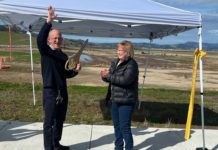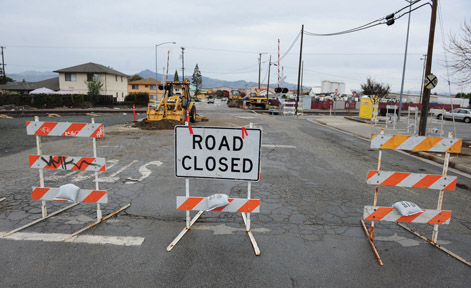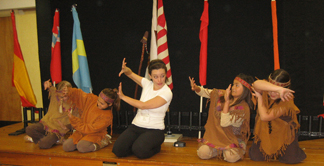Super Bowl signals garden chores
You won’t find this date on any gardening calendar, but once
Super Bowl weekend has passed, winter garden season kicks into high
gear. Football is over. Finished. Period.
The Winter Olympics in Turin, of course, will be around for a
bit, but otherwise there is little to keep the sports nut anchored
to the remote.
Super Bowl signals garden chores
You won’t find this date on any gardening calendar, but once Super Bowl weekend has passed, winter garden season kicks into high gear. Football is over. Finished. Period.
The Winter Olympics in Turin, of course, will be around for a bit, but otherwise there is little to keep the sports nut anchored to the remote.
Now there is really no reason to put off the garden chores waiting to be done.
Peach and nectarine trees: Peach-leaf curl is a common problem with peach and nectarine trees. Peach-leaf curl is a fungus spread by wind and rain. The leaves turn brown, curl and drop. Infected fruit is distorted and falls off.
A single spray of a fungicide controls this problem. Timing is important so check the buds on your tree and watch for them to swell. The ideal time to spray is when the buds are swollen but not yet showing color. Once the buds break open, the damage has already been done. There is no treatment at that point.
Bud swell on peach and nectarine trees usually happen in our region around Valentine’s Day.
Dormant spray: Not all gardeners use dormant spray on roses and deciduous fruit and nut trees. But if aphids and mites attacked in the previous season, that’s a good sign that a dormant spray is needed this season. These pests overwinter and will come back with a vengeance if left unchecked.
Dormant spray is a different product than the fungicide used for peach-leaf curl. What these two sprays have in common is the importance of timing. Apply dormant spray before buds swell and break into color. Dormant spray does no good once the blooms are open.
Bare-root planting: If you love a good bargain, this is the time to visit a nursery or garden center and buy, buy, buy. With bare-root planting season winding down this month, these outlets are frantic to clear out the bare-root stock to make room for early spring plants. . So, there are bargains galore among bare-root roses, fruit and nut trees, shrubs and other winter-season nursery stock. They should be put in the ground fairly rapidly, because these plants are beginning to break their dormancy and put out new growth.
Pruning: I consider pruning a job that just hangs over my head waiting – and waiting – to be done. Serious pruning on roses and fruit trees should be done before the plant growth swells and buds out. Without this winter prune, roses particularly grow poorly with too many diseased and excessive stems. Prune roses way back to encourage new flowering wood.
Plant: Besides the upkeep chores, February is a good time to plant dormant roots of artichokes, asparagus, rhubarb and horseradish. Choose your locations carefully because once planted, these perennial vegetables will die down and come back for many years. Also plant strawberry roots. They do very well in a raised bed.
Look ahead: Spring may seem like just wistful thinking at this point. Yet tomato season is just ahead, so treat the incoming garden catalogs as wish books. Flowers, vegetables, shrubs, vines and trees of every kind can thrive in our climate. Pick through the pages to find your favorites, add something new just for fun, and be prepared. Whether you buy from a catalog, on line, or at your neighborhood garden center, the choices can fill up your yard with the biggest and the best of everything.
***
A Reader Wants to Know: I’m confused. I bought a bare-root cherry tree that showed the USDA zone number as 9. But when I looked in Sunset Western Garden Book, it showed zone numbers 2-5, 7-11 and 16 for my Stella cherry tree. What’s the difference, and what do I need to know? – Debbie
Joan Says: This is an excellent question, because understanding these zone references is important to a gardener.
The USDA map shows 11 geographical zones based on the average annual minimum temperatures recorded for a 12-year period. The entire state of California is registered as Zone 9 with temperatures 20 to 30 degrees F. Considering the different regions in our state, that is a fairly general figure. But it also applies more or less accurately to the South Valley.
Sunset zones are more fine-tuned and take into consideration things like ocean breeze and summer humidity. Sunset lists Hollister, Morgan Hill and Coyote as Zone 14, although there is some overlapping into Zone 15 along the edges.
So, what does this tell you and why would you care? Mail-order catalogs and most nursery stock use the USDA zone. For instance, a dogwood tree offered by Wayside Gardens is suited to Zone 6-9, so you would know it is OK to grow in Hollister.
Sunset, meanwhile, uses its own zone rating for every plant shown in the Sunset Western Garden Book. Their zone listing for dogwood, for instance, depends on the variety. This allows the gardener to pick exactly the right dogwood variety for this region.
And, keep in mind that a local nursery or garden center would not stock a plant that is not suited to this region. What would be the point of selling something that’s going to fail?
The answer to your question is that both numbers are important. Personally, I rely on the Sunset numbers and always check my Sunset Western Garden Book before buying. It saves me time, money and disappointment.









